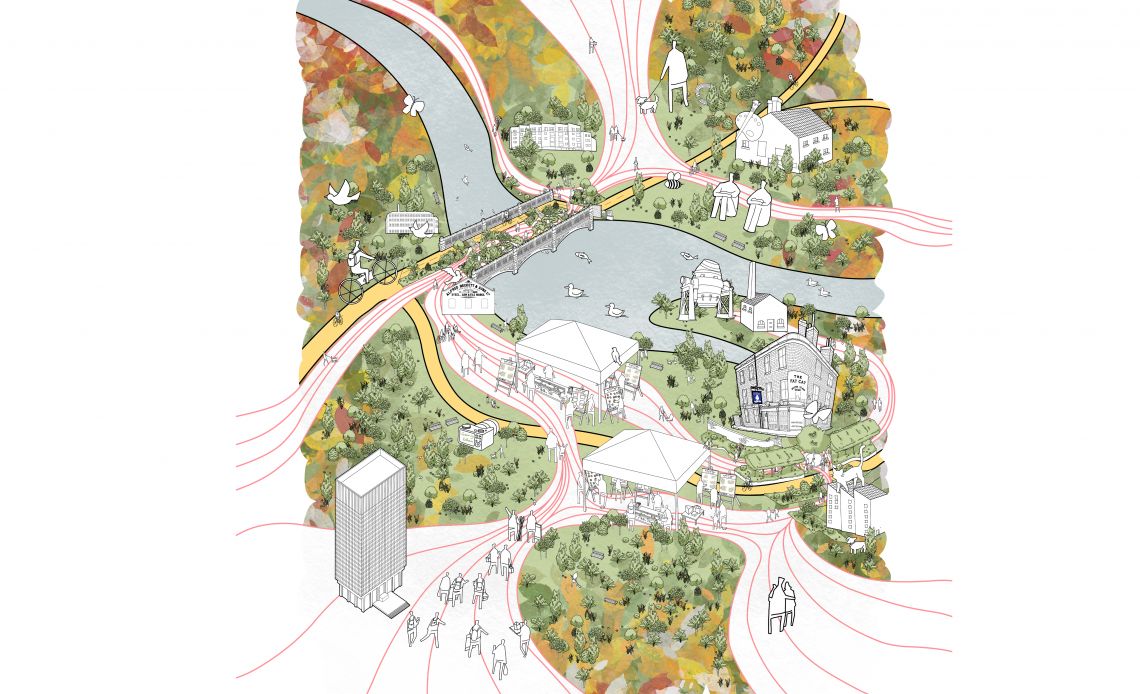
Year | 2023
Location | Kelham, Sheffield
Clients | Kelham Island and Neepsend Community Alliance
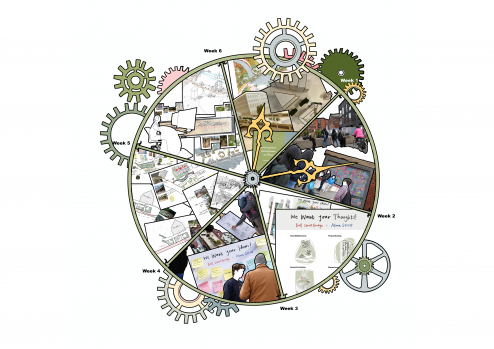
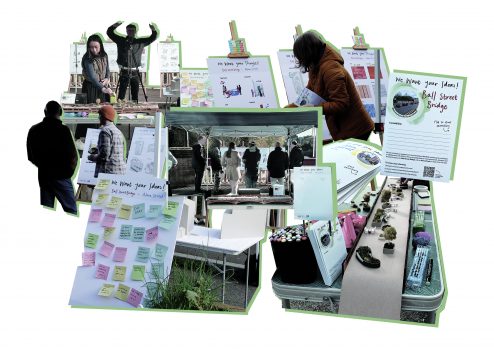
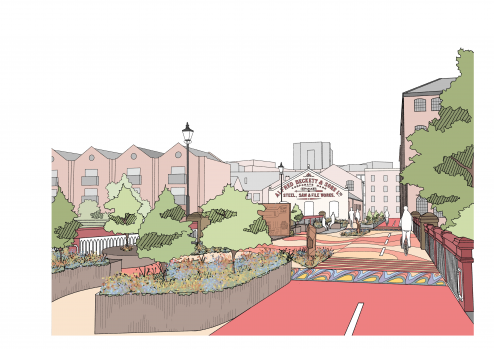

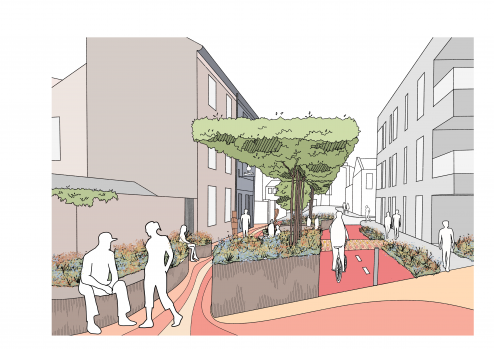
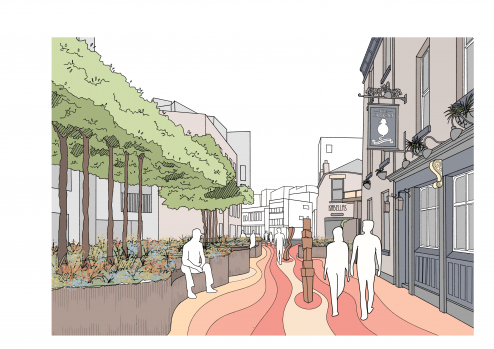
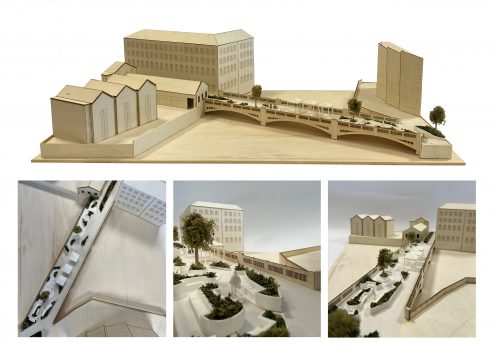

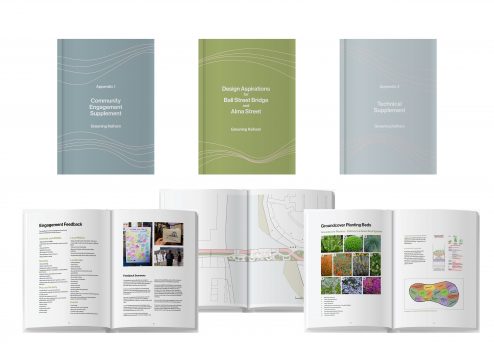
Students work alongside community to transform public space in Kelham.
Twelve students from Sheffield School of Architecture (SSoA) have been working closely alongside Kelham Island and Neepsend Community Alliance (KINCA) on a six-week Live Project to develop design proposals for new exciting public spaces
in Kelham Island. The project, Greening Kelham, looks at two sites on Kelham Island which are at the heart of Kelham Island’s changing landscape.
Kelham Island is a post-industrial area that was not designed to be a residential neighbourhood. As a result, it lacks many of the facilities that surrounding neighbourhoods have, for example, parks, schools, doctors surgeries and recreational facilities. The area has over 5000 residents and is rapidly growing.
In 2020, Ball Street Bridge and a section of Alma Street (in front of the Fat Cat pub) were closed off to traffic. These closures, although initially controversial, were remarkably successful. Traffic preventing infrastructure, such as planter boxes and
concrete bollards, became the foundation for new social gathering spaces. From these street closures grew exciting opportunities to develop new green, attractive, and social public spaces for Kelham Island.
Working alongside KINCA and the local community, students from SSoA developed design strategies for both sites. Community engagement formed a significant part of the project, including interactive leaflets and two dedicated engagement
events. The feedback gathered played a crucial role in shaping designs that recognise the importance of the spaces to the local community. It is hoped that KINCA can take forward these design proposals for a funding application which will see the proposals constructed for the community.
Whilst the engagement feedback and design proposals are specific to Kelham Island and its community, the strategies adopted through this project are not limited to this site. The students adopted a community engagement framework which is adaptable and replicable. It can inform potential future transformation in other areas that may not have the immediate resource, something that is available to Kelham. This would mean that these design proposals could link with, and extend, other green initiatives in Sheffield, such as ‘Connecting Sheffield’ and ‘Grey to Green’. This would contribute to building a more connected, more sustainable and healthier environment which is shaped by proud, empowered communities.
Credits:
Mentor: Howard Evans
Client: Kelham Island and Neepsend Community Alliance
Location: Kelham, Sheffield
Students: Jasmine Liu, Samuel Harris, Oi Ching Lee, Lewis Wilde, Emma Willis, Isabel Chapman, Joseph Deakin, Hereward Leathart, Chevally Zhao Shyen Lo, Wan Yee Yeow, Eman Omar H Almisaylihi, Minchen Liu

